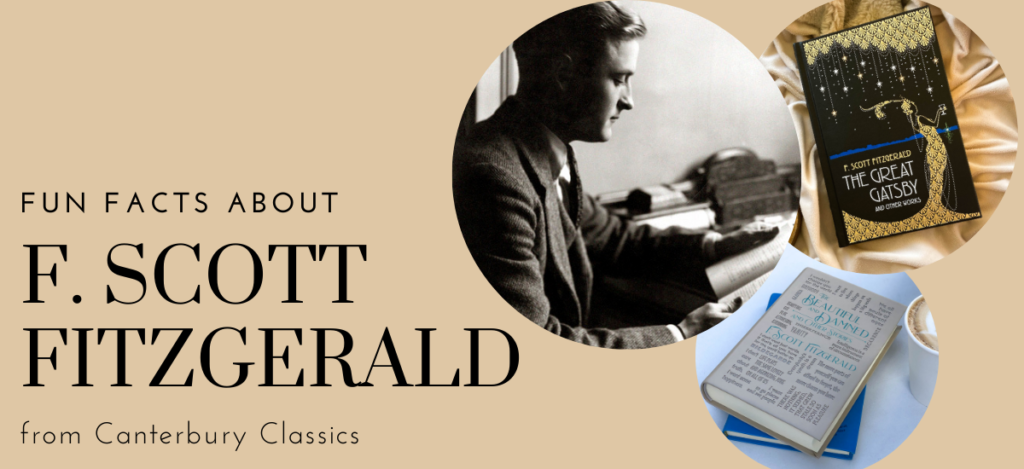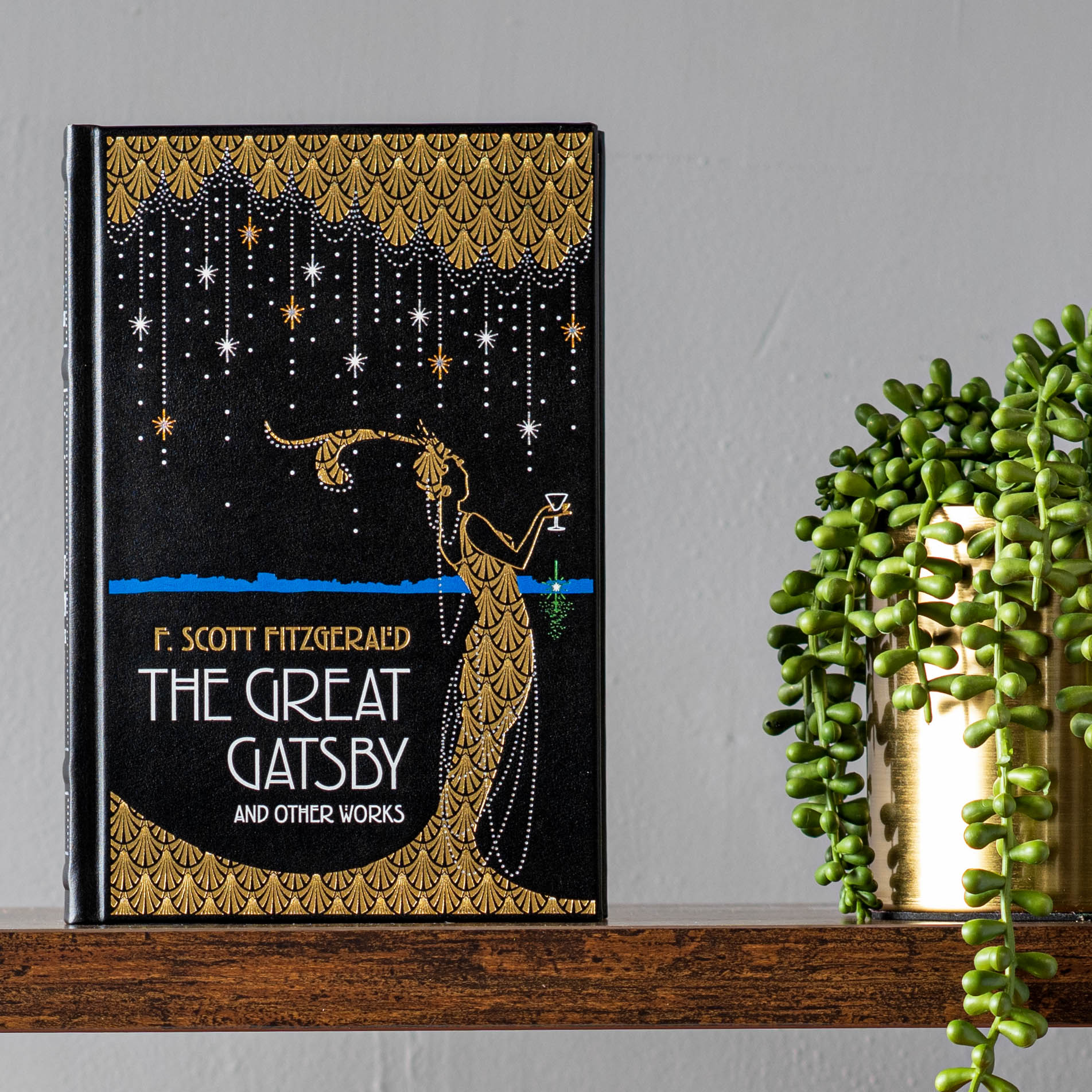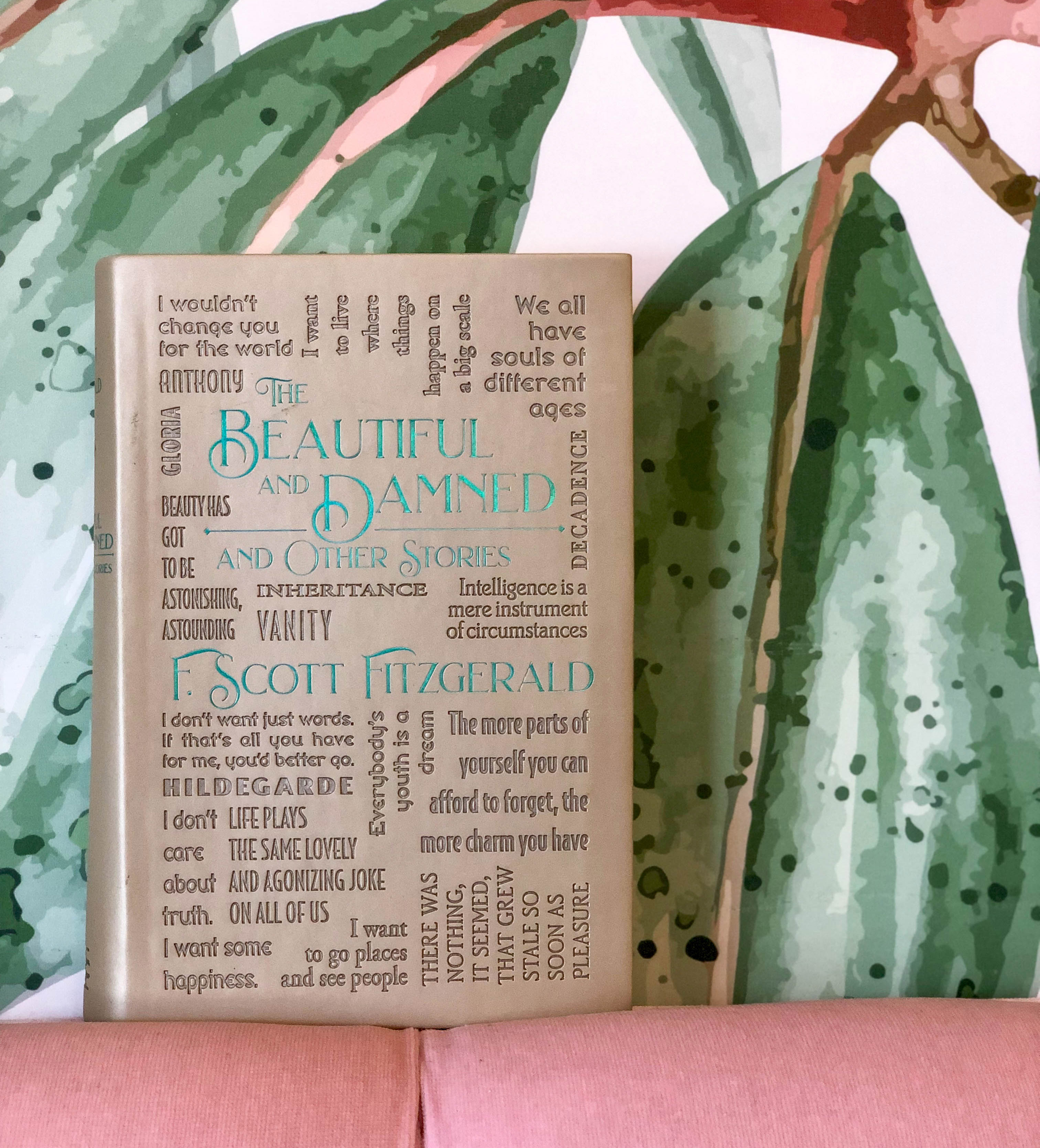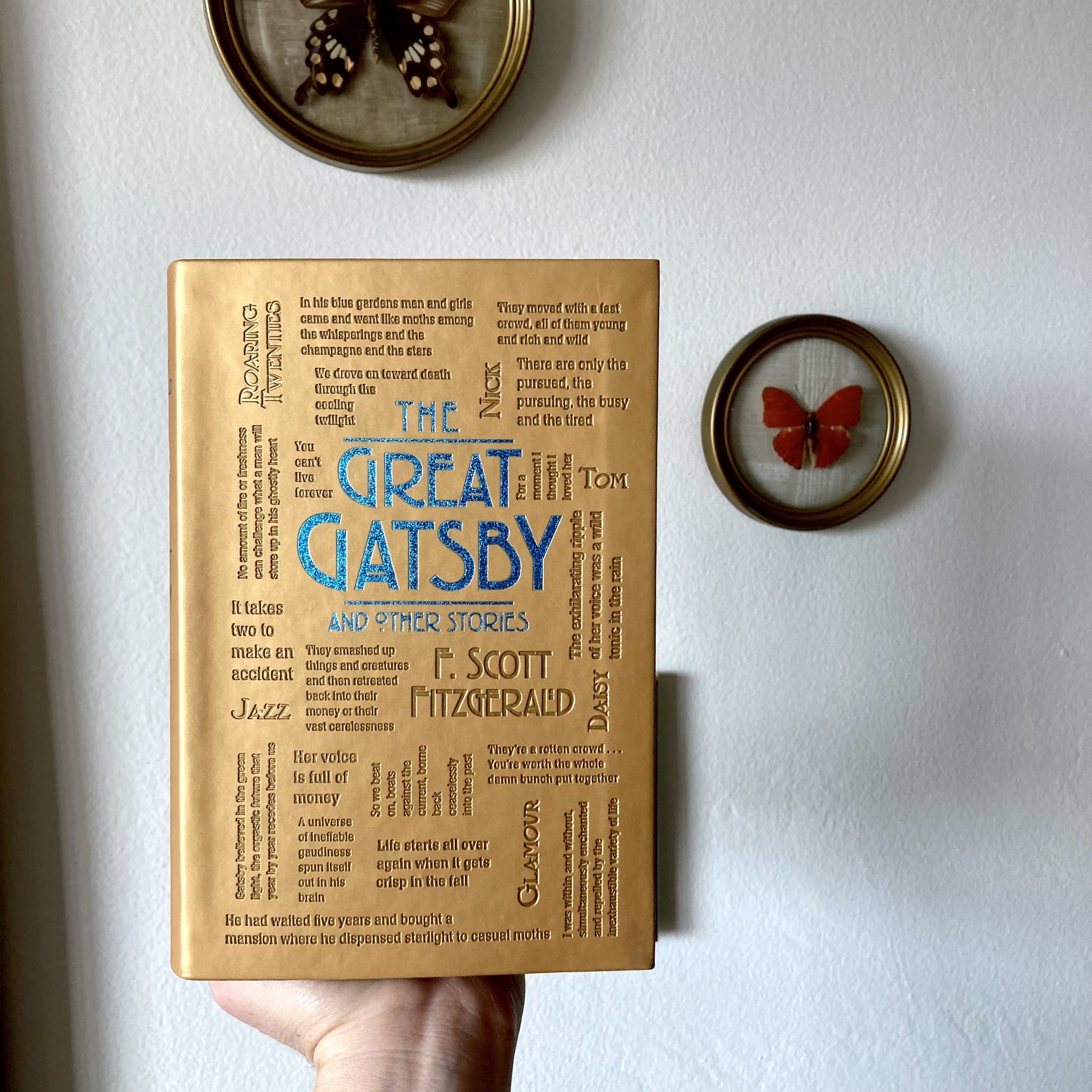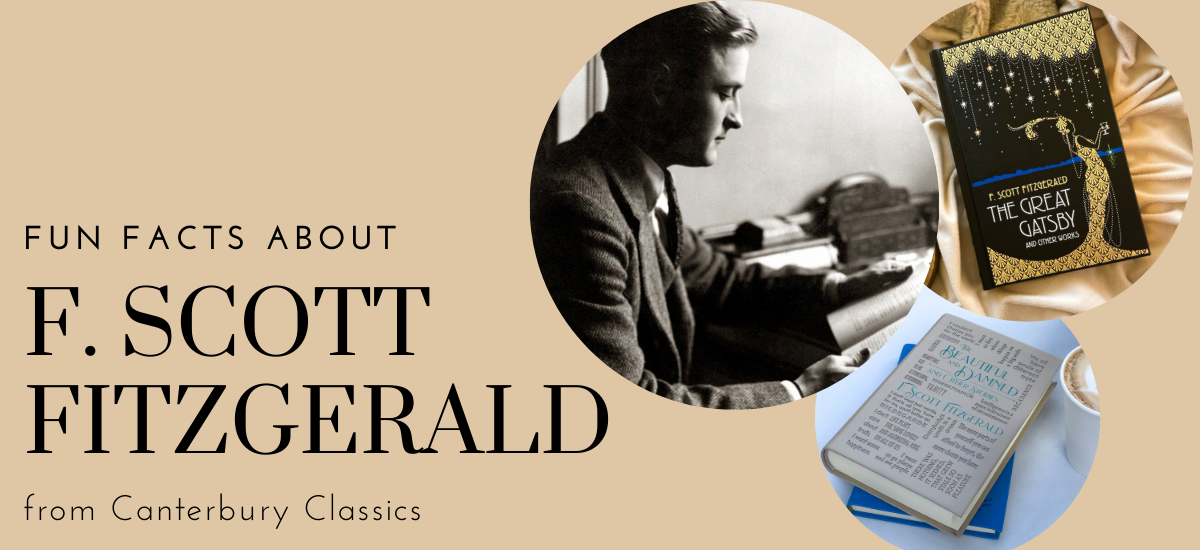
If you attended school in the U.S. during the last 80 years, chances are you read The Great Gatsby, F. Scott Fitzgerald’s heartbreaking story of love and identity during the Jazz Age. Now, you can find the story, plus more of Fitzgerald's work in our brand-new Word Cloud Classic and Leather-bound editions. Fitzgerald wrote several other contenders for the title of “Great American Novel,” including The Beautiful and Damned, also featured in our Word Cloud collection. Here’s a bit about the artist and his art.
The “F” Word
The author’s full, given name is Francis Scott Key Fitzgerald. He’s named after lyricist Francis Scott Key, who wrote the lyrics to “The Star-Spangled Banner” while detained on a British prison ship during the War of 1812. Key was a distant relative of Fitzgerald’s Minnesota family — a second cousin, thrice removed — but a young Fitzgerald often told people of his famous familial connection.
That Sounds Familiar
Long before movies introduced “cinematic universes,” Fitzgerald subtly linked up the worlds of his very different novels. In The Beautiful and Damned, a character complains that “Everywhere I go some silly girl asks me if I’ve read This Side of Paradise. Are our girls really like that? If it's true to life, which I don't believe, the next generation is going to the dogs. I'm sick of all this shoddy realism.” The Great Gatsby opens with an excerpt of a poem by Thomas Parke D’Invillers. That happens to be the name of a character from Paradise, and Fitzgerald used D’Invillers as a pseudonym from time to time.
It's a Hit
The Beautiful and Damned was serialized prior to its publication in Metropolitan Magazine in 1921. Nevertheless, when it was released as a single volume in March 1922, it immediately sold out its initial print run of 20,000 copies…and its next print run of 50,000 copies.
Write What You Know
Fitzgerald’s first book, the post-World War I study of disaffected youth, This Side of Paradise, was a commercial and critical smash upon its release in 1920. Not long after, Fitzgerald married Zelda Sayre, a Southern socialite as well as a “flapper,” a jazz-loving, liberated lady who smoked, danced, and drank (and was an accomplished writer, too). Her struggles with mental illness, as well as Fitzgerald’s burgeoning alcoholism and how their relationship suffered inspired his second novel, The Beautiful and Damned.
Long Story Short
As far as fiction goes, today novels greatly outsell short story collections. But in the early decades of the 20th century, an author could find fame as well as fortune as a writer of short fiction. Fitzgerald was among the best paid and most widely read authors of short stories in the 1920s, publishing them in many of the era’s literary journals and popular periodicals. Fitzgerald wrote just five novels, but 160 short stories, among them “The Curious Case of Benjamin Button,” “The Diamond as Big as the Ritz,” and “Bernice Bobs Her Hair.” All are available to read in our Word Cloud Classic edition.
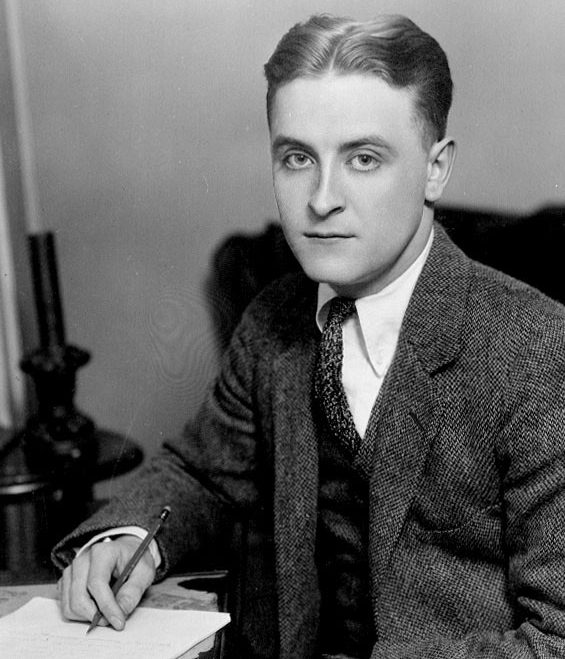
Hooray for Hollywood
While regarded today as a classic, The Great Gatsby earned such terrible reviews and sold so poorly in 1925 that it led to the end of Fitzgerald’s ability to make a living as an author. In the 1930s, he moved to Hollywood to become a secret script doctor, punching up screenplays (without credit) for movies like The Women and Gone With the Wind. His time in Tinseltown inspired his final book, The Last Tycoon, which remained unfinished upon his death in 1940.
The Great Gatsby Leather-Bound Giveaway
We're giving away 5 copies of our new leather-bound classic, The Great Gatsby and Other Works! To enter, simply fill out the form below by 11:59 p.m. PST on Tuesday, 1/26. The 5 winners will be selected at random and notified by email the following day. USA, UK, and Canada only. Ages 18+. Good luck!








